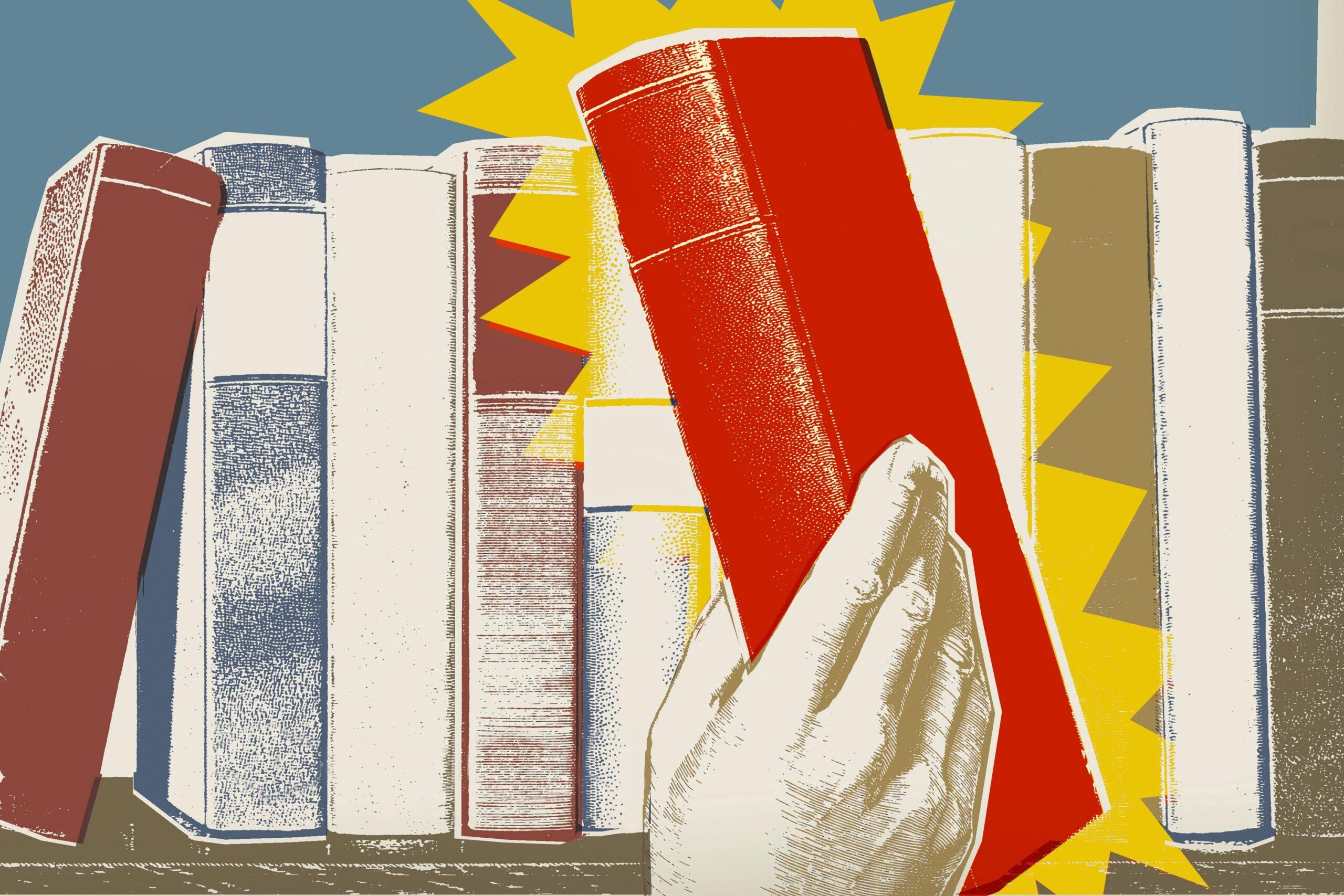The Ringer Summer Reading List
Which books were worth the wait? Which one is perfect to read in one sitting during a rainy July day? Halfway through 2017, we’re giving out prizes for those honors — and a lot more.
It’s the height of summer, the ideal time to peruse a book from your spot on a beach towel or an airplane or maybe even just your apartment because it’s a thousand degrees outside. Even though it’s ages till the Pulitzers come out, there’s still a way to sort through this year’s books to find the best ones: by giving out extremely specific awards to a handful from the first half of 2017. And the winners are …
Worth the Wait: ‘Who Is Rich?’ by Matthew Klam
Kate Knibbs: Matthew Klam published a beloved short-story collection, Sam the Cat, in 2000. Seventeen years later, we finally have his first novel, a tragicomic tale of infidelity, aging, art, and summertime mistakes that is somehow more generous and more jaggedly funny than one might expect from a story about a middling illustrator shirking his marriage. Rich knows his affair with a bored, filthy rich housewife is “as corny as that piña colada song, and as irrational as a noxious fear in the night” — and he fumbles toward it anyway. In the wrong hands, there could be no contemporary fiction protagonist trope more boring than the horndog, middle-aged professional afraid of his paunch, but Klam imbues Rich with such pathos that he transcends his type. I hope Klam doesn’t take so long for his follow-up.
Gentlest Reminder of How Much Cooler Everything Used to Be: ‘Meet Me in the Bathroom’ by Lizzy Goodman
Rob Harvilla: Ever read a 600-page book in one sitting? The mammoth oral history Meet Me in the Bathroom, subtitled Rebirth and Rock and Roll in New York City 2001–2011, chronicles the meteoric rise of the Strokes, Interpol, the Yeah Yeah Yeahs, TV on the Radio, Vampire Weekend, and other monsters of turn-of-the-century rock, both of the indie and not-so-indie varieties. Goodman, a longtime journalist for places like New York magazine and Elle, was there, as the song goes, and uses hundreds of candid interviews to flesh out the petty squabbles, drug binges, and transcendent breakthroughs that helped make NYC the coolest place on earth again, and Brooklyn specifically the coolest place on earth for the first time ever.
The Strokes are undeniably the star attractions: Goodman talks to all five, and nearly every musician, journalist, and industry player hails them as the biggest (or at least best) rock band in town since the Ramones. But the all-around MVP might be LCD Soundsystem mastermind James Murphy, who retraces his early days cofounding the label and production team DFA, and the megalomaniacal genesis of the band that’d soon make him famous. “There’s something sad about ‘Oh I’ll just do my thing,’” he rants. “It’s like, fuck you. It just seems safe.” Some of these bands ended with a whimper, but you can’t accuse any of them of playing it safe.
Best Essay That Will Make You Cry on the Train Turned Memoir That Will Make You Cry on the Train: ‘The Rules Do Not Apply’ by Ariel Levy
Alison Herman: You might be familiar with Ariel Levy’s “Thanksgiving in Mongolia,” the longtime New Yorker writer’s heart-wrenching, universally lauded account of her late-term miscarriage on a reporting trip to rural Asia. Three and a half years later comes the book-length version of Levy’s lifelong relationship with thorny concepts like marriage, motherhood, and expectations so deeply ingrained we don’t even realize we have them. With admirable calm and self-awareness, Levy places her tragedy in the context of an intricate emotional history: long-term partnership, infidelity, fluctuating sexuality, professional mobility, and addiction all factor into Levy’s finely crafted self-portrait. When the miscarriage finally arrives three-quarters of the way through the book, it’ll break you apart all over again, because Levy treats her own maturity, development, flaws, and pain with the same precision as her nonfiction subjects’. Kleenex not included.
Best Reality Check on Russia: ‘Other Russias’ by Victoria Lomasko
Kjerstin Johnson: Although Victoria Lomasko’s Other Russias combines text and line drawings, there’s no mistaking it for a comics collection or graphic novel. The Russian author and illustrator specializes in “graphic reportage,” where she sketches in-person scenes and interviews while reporting from the margins of Russian society — juveniles in jail, activists on trial, teachers in a town so small they commute by motorboat. Through Lomasko’s linework and words, we meet Russians we don’t see and rarely think of when whatever recently illuminated slime trail leading back to the Kremlin clogs our newsfeeds.
A significant part of the book is devoted to recent activism and protests. In the winter of 2011, citizens turned out in record numbers to protest Putin and demand fair elections. At the time I’m sure I read a few articles about Pussy Riot and then flipped back to the crossword, shaking my head at another corrupt nation halfway around the world with rigged elections and quashed dissent. Now, the reality Lomasko depicts in her book — peaceful protests shut down by police, a science foundation declared a “foreign agent” by the Justice Ministry, an inner-circle oligarchy that lines its pockets with the national economy — is much closer, not just due to Putin’s daily appearance in our headlines.
Lomasko doesn’t hide her allegiances, but her vignettes are written with a reported, journalistic tone. There are no wrought calls for action or sentimentality behind what “resistance” looks like. Her subjects are similarly straightforward: “People where I work were forced to vote for Putin,” one parka-wearing protester casually relays.
While not exactly breezy summer reading, the book is a window into the struggles and perseverance (but mostly struggles) of people living under authoritarianism, or as she describes it, “a story of ordinary people unfolding against the larger background of history.” As history inches uncomfortably to the foreground, the people profiled in Other Russias are worth listening to.
Best Articulation Involving a Weasel of an Absurd Yet All-Encompassing Theory of Writing: ‘The Idiot’ by Elif Batuman
Lindsay Zoladz: “My husband thought that your room is very empty, so you might like a little weasel,” a woman tells Selin, the protagonist of Elif Batuman’s debut novel, The Idiot. Indeed, a stuffed weasel stares blankly back at Selin from the corner of her guest room. “We can move it downstairs now. He won’t be hurt,” the woman tells her. Selin thinks, in her observant and off-kilter internal monologue, “It wasn’t clear to me who it was that wouldn’t be hurt — her husband or the weasel. In either case, it seemed clear to me that if you really wanted to be a writer, you didn’t send away the weasel.”
Admittedly, I am a total sucker for a young-writer-comes-of-age novel, but The Idiot is the sweetest, funniest, and most wonderfully droll one I’ve come across in some time. Written by New Yorker contributor Elif Batuman (who previously authored a chattily intelligent essay collection about Russian novels), The Idiot is about the misadventures of Selin, a college freshman with a busy interior life, a tragically dim understanding of social graces, and a big ol’ crush on a guy from her Russian class named Ivan. Also, an email address, in the ancient year 1995, no less. Selin and Ivan begin a strange, torturous email correspondence that seems to have little relation to the scant interactions they have in real life. The Idiot is, among other things, a meditation on something that’s become much more commonplace since ’95, the gulf between the digital and physical selves. But more than anything it’s about the way Selin interacts with and tries to make sense of the weird, random design of the world around her. It’s about dead-end tangents, rambles, and intellectual flights of fancy — so really, it’s about the first year of college. Or, even broader, it’s a book about not sending away the weasel.
Best Memoir About Moving Back in With Your Parents: ‘Priestdaddy’ by Patricia Lockwood
Charlotte Goddu: Patricia Lockwood, best known for her poetry, Twitter, and sexts, has moved on to the memoir. In Priestdaddy, she chronicles the nine-month stretch during which health issues and their financial toll forced her to move back in with her parents, who live not in some suburban split-level but in the rectory of the Catholic church where her father is a priest. He is also a capital-C Character, a man of God who lounges around in his underwear and loves practicing screeching solos on his numerous electric guitars. Lockwood’s prose is hilarious. She describes her father’s hatred of cats — “He considers them to be little mean hillary clintons covered all over with feminist legfur” — and devotes an entire chapter to getting very drunk on vodka Mountain Dews at an important dinner with a bishop. Though I snort-laughed in the train many times while reading this book, it wasn’t so much the humor that bowled me over as it was the perfect interlocking images that compose the memoir. Lockwood is mostly a poet and so her book is full of poetic lines, small, graceful phrases that make every sentence better than the last.
Best Unreliable Narrator in the Fashion and Media Space: ‘The Price of Illusion’ by Joan Juliet Buck
Amanda Dobbins: Joan Juliet Buck is best known for two late-career controversies: her unceremonious firing from Paris Vogue, where she was the editor-in-chief from 1994 to 2001; and her unconscionably fluffy 2011 profile of Asma al-Assad, written for American Vogue. Buck’s memoir, The Price of Illusion, only briefly touches the latter controversy, and though it is more or less motivated by Buck’s dismissal, I found the explanation of that event, involving “salt-water syringes” and a legal word salad, to be hazy at best. But the book that precedes it is filled with remarkable and beautifully written — if almost certainly exaggerated — stories from a better-than-fiction life. Buck was raised in Europe but constantly surrounded by Hollywood stars like Jack Huston and Peter O’Toole (her father’s producing partner). She was best friends with Anjelica Huston, a muse to Tom Wolfe, and a mistress to Donald Sutherland; she wrote for Glamour, Vanity Fair, and The New Yorker. Buck’s version of late-’90s Condé Nast is both petty and loving, with the requisite Jil Sander references and Anna Wintour slights. Her Paris apartment is haunted; her love life is doomed. (There is a breakup involving a private jet and a sudden death in Provence.) Like the magazine Buck edited, it’s all Too Perfect — and too art-directed — to be real. I devoured it anyway.

